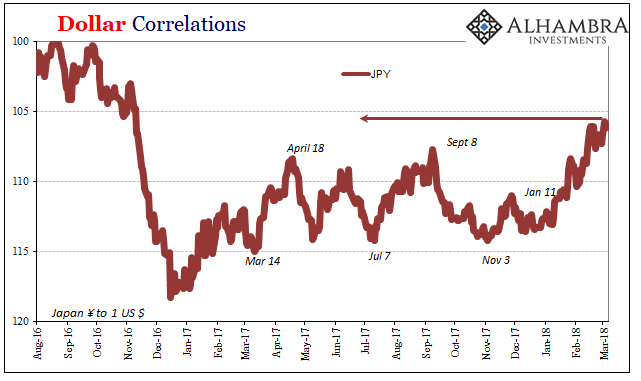The narrative for global growth, synchronized or not, doesn’t do well with JPY on the rise. Referred to as a safe haven, there should be no reason for an exchange value at a level not seen since late 2016. It flies in the face of the falling dollar, though in the case of yen, backwards as is usual, this particular falling dollar is as the “rising dollar.”
So, for a few days Haruhiko Kuroda provided a plausible explanation. As noted earlier, last Friday he was especially upbeat and indicated to Japan’s parliament that BoJ policymakers were looking at April 2019 for an exit from extraordinary QQE (with YCC).
Problem solved, BoJ is now hawkish!

Except, no, Kuroda today walked back his comments and still JPY is higher. It’s lower now than last week, but moving in trading today back into 105’s. In addition, it’s not as if there is a realistic pathway to successful QQE completion to begin with, given what that monetary redistribution scheme has done to Japan (not for Japan).
That’s not how currencies move, anyway. Interest rate differentials are a nice topic of conversation, but a “rising dollar” is nothing to do with interest costs (or covered interest parity, for that matter). It’s the synthetic “dollar” short which has often become a global shortage. Rising JPY has been an indication of that.
If I had to put forward a speculative reason for JPY recently, to me it’s far more likely related to this:


There aren’t many positive funding attributes that would go into a 7.833 HKD exchange rate, the lowest since December 1984. And I doubt there are many good scenarios, especially across Asia, where this ends without some kind of messy rebalancing. It might even propose that Japanese banks get out of the dollar business a little quicker than they already have.












Leave A Comment